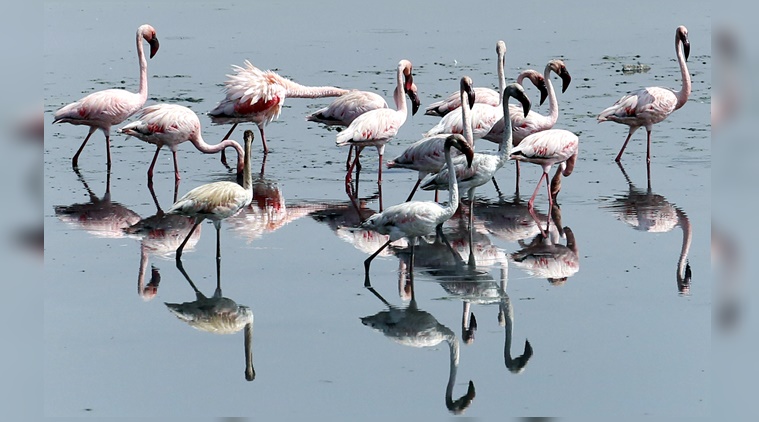India’s first bullet train is taking 3 acres from a flamingo sanctuary

The Flamingo yoga pose (the forward stretch of the torso while balancing on one leg) might have given you sore muscles, but tear away from the pain and you can enjoy watching the yoga pose’s inspiration flocking on Mumbai’s wetlands and creeks in their signature pose, feeding and mating. The pink beauties, that perch proudly on one limb while dozing, start arriving in the city from September from Kutch (Gujarat) and Rajasthan and stay on till May. They fly to mudflats and creeks, wherever they can find their staple diet — algae.
As the Mumbai-Ahmedabad high-speed train corridor got wildlife clearance on February 5 from a committee chaired by Union environment minister Harsh Vardhan, to divert 3.27 hectares of land from the Thane Creek Flamingo Sanctuary, it has created a ripple of fear among environmentalists and birders.
Mostly, because the Thane creek, 26 km in length may have never seen more flamingos congregate there than there are right now in the city. “The only objection we have raised for this (bullet train) is that there is no study done on the impact of drilling on the mudflat. This needs to be examined as currently, on one side, there is MTHL construction going in, on the other, there is Navi Mumbai airport work. Thus, the bulk of flamingos are using the Thane creek,” says Deepak Apte, director of Bombay Natural History Society (BNHS).
The first comprehensive study on flamingos around Mumbai, published on February 2 by the BNHS, reported that a total of 1,21,900 flamingos (including both greater and lesser) inhabited Mumbai in January, while the numbers remained between 46,000 and 53,700 in October and December, respectively. The study is a part of the BNHS’s 10- year-long ecological study on flamingos and other waders at the eastern seafront of Mumbai (Sewri- Nhava seascape).
